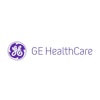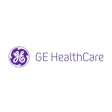Encounter-based imaging such as point-of-care ultrasound (POCUS) may correlate with compliance gaps in medical record retention. As a result, it's crucial for healthcare organizations to develop specific workflows to properly incorporate these images into an enterprise imaging strategy.
Compliance and department managers of hospitals, health systems, and community clinics may want to run an audit of POCUS use and a compliance check of record storage and image retention policy, according to Luke Bideaux, an imaging informatics consultant. Bideaux told AuntMinnie.com that he has seen variance in encounter-based imaging workflows, which may, if best practices are not observed, result in legal and compliance risks as well as patient-care-related issues.
“Many organizations are not even aware of the severity of their current issues,” said Bideaux, president and CEO of Vega Imaging Informatics. Bideaux said the increase in encounter-based imaging, such as POCUS performed across the healthcare enterprise, requires tailored workflows to ensure payer and legal compliance.
What is encounter-based imaging?
Encounter-based imaging is defined as medical imaging that is performed on a patient encounter without an associated imaging order. Examples include POCUS, medical photos, and endoscopy images.
In recent years, the use of POCUS has increased to more locations within and outside of hospitals and health systems. Legal requirements around the storage of medical images generated by POCUS may not be a forethought with practices.
“It is important to properly manage your patient encounters and know what qualifies as an imaging exam that requires long-term storage,” Bideaux explained. “States define medical record retention laws differently, so each institution must be aware of the legal requirements in their own jurisdiction. From a payer perspective, if you're going to bill for an imaging exam, it’s typically required to store the study long-term. You could have organizations out there that are billing for imaging exams but not storing their images properly. This introduces a risk for compliance violations under a payer audit.”
Each specialty in a healthcare environment may have unique workflow requirements, so a one-size-fits-all approach to encounter-based image management is not a good strategy in this area, according to Bideaux. The workflow discrepancies result in different challenges as well.
“Some specialties may fail to maximize their billings due to a mismanagement of encounter-based exams, whereas other specialties may struggle with complying with the image management requirements for the exams they bill for,” Bideaux continued. “In instances where an enterprise image archive is in place, the storage of images from one specialty may clutter the electronic patient jacket for another specialty, so these image management strategies must address the needs of all providers that are affected.”
A robust enterprise imaging program
 Alexander J. Towbin, MD, University of Cincinnati College of Medicine, Cincinnati Children’s Hospital Medical Center.
Alexander J. Towbin, MD, University of Cincinnati College of Medicine, Cincinnati Children’s Hospital Medical Center.
Alexander Towbin, MD, a professor of radiology and chair of radiology informatics at the University of Cincinnati College of Medicine, leads a team testing encounter-based imaging workflows. He practices at Cincinnati Children’s Hospital Medical Center (CCHMC).
“The point of encounter-based workflows is to enable efficient workflow without adding excessive workflow steps. It doesn't make sense to ask a dermatologist when they're taking a photo to place an order,” Towbin told AuntMinnie.com. “A lot of our enterprise imaging workflows may have orders in the background, but we're not asking people to place orders specifically. The order for the specific point-of-care study is placed automatically based on the specialist’s standard workflow.”
Towbin said that information from other specialties enriches the patient's medical record.
“The enterprise imaging archive breaks down the storage silos and allows providers in every specialty to better understand the imaging that the patient has already undergone,” he explained.
In 2016, Towbin co-authored an important early paper on orders- versus encounters-based image capture. Published in the Journal of Digital Imaging (JDI), this paper covered critical aspects such as pre- and post-procedure workflow, technical and build capabilities, resulting, analytics, and revenue capture. CCHMC invested in a large enterprise imaging program and a single, vendor-neutral archive (VNA). Since then, Towbin and his team have created and continue to refine smooth workflows to reduce click fatigue for clinical staff.
Cincinnati Children’s is a nonprofit, comprehensive pediatric health system that from July 1, 2022, to June 30, 2023, managed just over 1.65 million total patient encounters. The best example of a pure encounters-based workflow, Towbin explained, is photography, and that’s in every specialty at the hospital and location from ambulatory to inpatient to emergency room.
Integrating POCUS, billing
Point of care ultrasound, Towbin continued, has become widely used. He pointed to a paper he co-authored that was published in the JDI in September 2022. In it are insights from implementing a standardized electronic health record (EHR)-based workflow for POCUS in relation to billing and documentation within the EHR. This information will be of value to clinicians, developers, imaging IT specialists, and other researchers.
For this project, the guiding principle was to create a standard process that enabled providers to efficiently perform, document, store, and bill POCUS studies across multiple specialties and within multiple settings, the report stated. More about the discovery, systems and setting, requirements, interventions, and workflow specifics can be found in the paper.
Seven divisions at Cincinnati Children’s have implemented a POCUS workflow: anesthesia, rheumatology, emergency medicine, pediatric ICU, neonatology, cardiology ICU (not cardiac echoes), and physical medicine and rehabilitation. The researchers noted three key points about integrating encounter-based imaging -- specifically POCUS -- into enterprise imaging.
- It takes approximately six months to move a division from the discovery phase through clinical go-live.
- Most of the time spent is in the creation of the billing codes within the EHR.
- A total of 6,387 POCUS studies were performed on 18 POCUS machines between January 1, 2016, and December 31, 2021. Overall, by the end of 2021, $2.4 million dollars of new services were billed.
Retaining and storing POCUS images in either the hospital PACS or the enterprise VNA is especially important for meeting Medicaid documentation rules in relation to billing, the authors wrote. They believe that the EHR-driven workflow, without middleware, is more efficient.
Specific procedures have mapped CPT codes for automatic billing for the procedure performed, and procedures can be easily retrieved for clinical review or audit, Towbin explained.
Encounter-based POCUS roadmap
With encounter-based imaging studies, some caution that there is a lack of clarity industry-wide about which encounter-based images must be stored long term. For instance, for POCUS, some exams are performed for clinical purposes, whereas others are performed as training exercises or for educational purposes.
For the past four months, Bideaux has been a member of a new workgroup leveraging expertise from the Healthcare Information and Management Systems Society (HIMSS), Society of Imaging Informatics in Medicine (SIIM), and the American Institute of Ultrasound in Medicine (AIUM). Among other goals, the IMSS/SIIM/AIUM Enterprise Imaging Point of Care Ultrasound Workgroup aims to develop guidance for the industry on the use of POCUS devices.
Bideaux emphasizes the workgroup's guidance that all imaging studies used for clinical purposes must be stored long-term.
“Ultrasound imaging can’t be compared to stethoscope assessments, or other clinical tools that do not generate medical images,” Bideaux said. “Regardless of the specialty setting or outcome of the exam, medical imaging studies acquired for clinical purposes should be stored long-term according to each institution’s respective retention requirements. Governance over all imaging in the enterprise is crucial for success as an imaging provider. It makes sense to validate systems into a single image archive.”
 Luke Bideaux, Vega Imaging Informatics.
Luke Bideaux, Vega Imaging Informatics.
Specifically, the HIMSS/SIIM/AIUM Enterprise Imaging Point of Care Ultrasound Workgroup breaks down actionable planning into three primary areas: governance, pre-deployment, and deployment. Further details on the workgroup's roadmap will be forthcoming, according to Bideaux.
Although creating visual media during patient encounters has become common in most medical specialties, wide adoption of POCUS technology, specifically, means that organizations would be wise to go a step further than the encounter-based imaging plan alone and consider moving to an enterprise imaging strategy that includes a VNA, Bideaux concluded.




